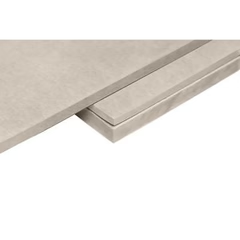
Fire Board
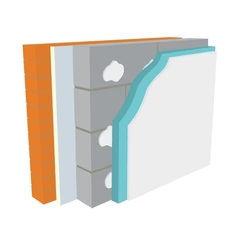
Plasterboard Pallet
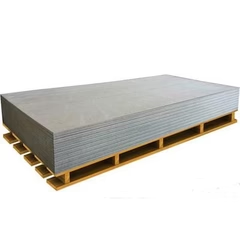
Render Board
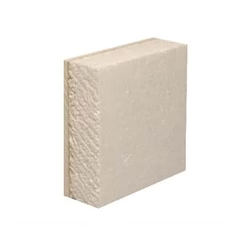
Thermaline Plasterboard

Tapered Edge Plasterboard
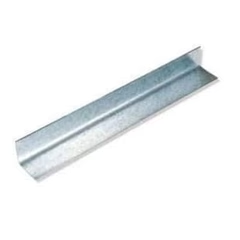
Metal Studs
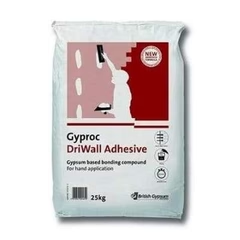
Dry Lining Supplies
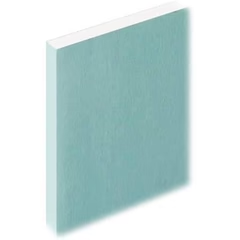
Drywall Panels
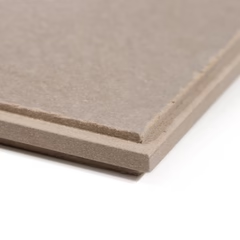
Fire Cement Board
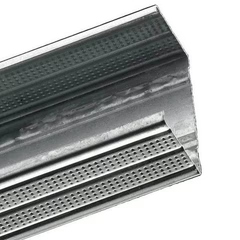
Metal Stud Wall
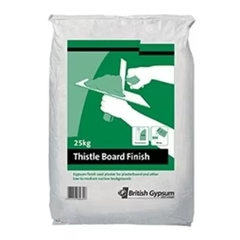
Plaster
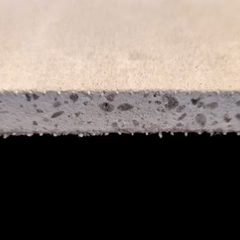
Plasterboard Sheet
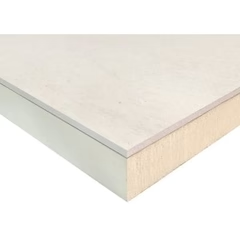
Plasterboard 8X4
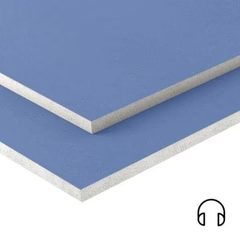
Soundboard Plasterboard
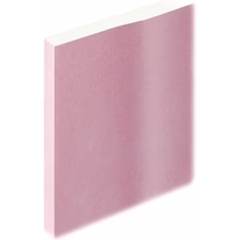
Fire Rated Plasterboard
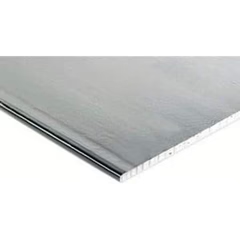
Foil Backed Plasterboard
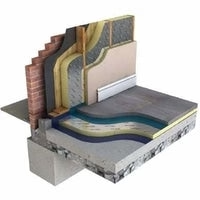
Insulated Plasterboard
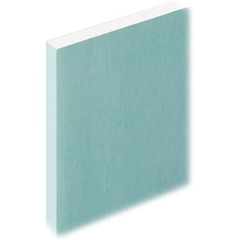
Moisture Resistant Plasterboard
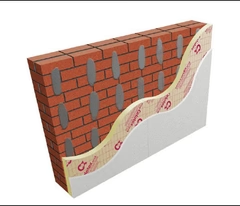
Plasterboard
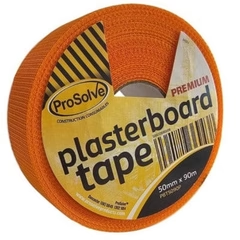
Plasterboard Fixings
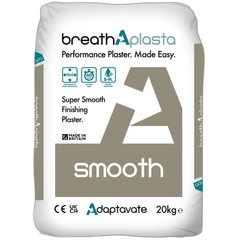
Plasterboard Skim & Adhesives
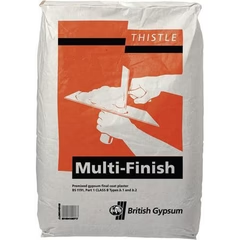
Plasterboard Tools & Accessories
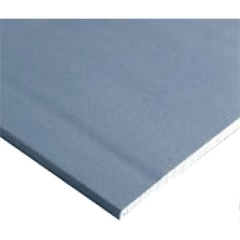
Soundproof Plasterboard
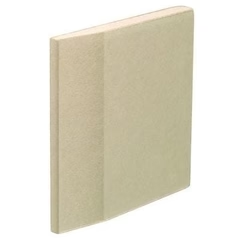
Standard Plasterboard
-
Fermacell High Performance Building Board - All Sizes (Price Per Pallet)
Vendor:Fermacell Free delivery on Fermacell orders over
£300£360
from
Regular price £1,822.41 £2,186.89Sale price £1,822.41 £2,186.89 Regular priceUnit price per
Free delivery on Fermacell orders over
£300£360
from
Regular price £1,822.41 £2,186.89Sale price £1,822.41 £2,186.89 Regular priceUnit price per£0.00 -
Thermboard EPS Thermal Laminate 2.4m x 1.2m - All Sizes (Price Per Pallet)
Vendor:Thermboard Free delivery on orders over
£450
£540
from
Regular price £451.90 £542.28Sale price £451.90 £542.28 Regular priceUnit price per
Free delivery on orders over
£450
£540
from
Regular price £451.90 £542.28Sale price £451.90 £542.28 Regular priceUnit price per£0.00 -
Thermboard HP+ Thermal Laminate 2.4m x 1.2m - All Sizes (Price Per Pallet)
Vendor:Thermboard Free delivery on orders over
£450
£540
from
Regular price £532.99 £639.59Sale price £532.99 £639.59 Regular priceUnit price per
Free delivery on orders over
£450
£540
from
Regular price £532.99 £639.59Sale price £532.99 £639.59 Regular priceUnit price per£0.00 -
Thermboard PIR Thermal Laminate 2.4m x 1.2m - All Sizes (Price Per Pallet)
Vendor:Thermboard Free delivery on orders over
£450
£540
from
Regular price £728.99 £874.79Sale price £728.99 £874.79 Regular priceUnit price per
Free delivery on orders over
£450
£540
from
Regular price £728.99 £874.79Sale price £728.99 £874.79 Regular priceUnit price per£0.00 -
Knauf Wallboard 9.5mm x 2.4m x 1.2m TE (Pallet of 92)
Vendor:Knauf Free delivery on Knauf orders over
£300£360
Regular price £917.11 £1,100.53Sale price £917.11 £1,100.53 Regular priceUnit price per
Free delivery on Knauf orders over
£300£360
Regular price £917.11 £1,100.53Sale price £917.11 £1,100.53 Regular priceUnit price per£0.00£0.00 -
Hilux Calcium Silicate Board 2440 x 1220mm - All Sizes
Vendor:Ramco £95£114
flat rate delivery on Ramco products.
from
Regular price £24.50 £29.40Sale price £24.50 £29.40 Regular priceUnit price per
£95£114
flat rate delivery on Ramco products.
from
Regular price £24.50 £29.40Sale price £24.50 £29.40 Regular priceUnit price per£0.00 -
Hicem Fibre Cement Board 2440 x 1220mm - All Sizes
Vendor:Ramco £95£114
flat rate delivery on Ramco products.
from
Regular price £23.26 £27.91Sale price £23.26 £27.91 Regular priceUnit price per
£95£114
flat rate delivery on Ramco products.
from
Regular price £23.26 £27.91Sale price £23.26 £27.91 Regular priceUnit price per£0.00 -
Moisture Resistant Plasterboard Tapered Edge (2.4m x 1.2m) - All Sizes
Vendor:Gypfor Free delivery on Gypfor orders over
£300£360
from
Regular price £16.65 £19.98Sale price £16.65 £19.98 Regular priceUnit price per
Free delivery on Gypfor orders over
£300£360
from
Regular price £16.65 £19.98Sale price £16.65 £19.98 Regular priceUnit price per£0.00 -
Fire Resistant Plasterboard Tapered Edge (2.4m x 1.2m) - All Sizes
Vendor:Gypfor Free delivery on Gypfor orders over
£300£360
from
Regular price £13.43 £16.12Sale price £13.43 £16.12 Regular priceUnit price per
Free delivery on Gypfor orders over
£300£360
from
Regular price £13.43 £16.12Sale price £13.43 £16.12 Regular priceUnit price per£0.00 -
Standard Plasterboard Tapered Edge (2.4m x 1.2m) - All Sizes
Vendor:Gypfor Free delivery on Gypfor orders over
£300£360
from
Regular price £9.69 £11.63Sale price £9.69 £11.63 Regular priceUnit price per
Free delivery on Gypfor orders over
£300£360
from
Regular price £9.69 £11.63Sale price £9.69 £11.63 Regular priceUnit price per£0.00 -
Standard Plasterboard Square Edge (2.4m x 1.2m) - All Sizes
Vendor:Gypfor Free delivery on Gypfor orders over
£300£360
from
Regular price £9.69 £11.63Sale price £9.69 £11.63 Regular priceUnit price per
Free delivery on Gypfor orders over
£300£360
from
Regular price £9.69 £11.63Sale price £9.69 £11.63 Regular priceUnit price per£0.00 -
Vapour Plasterboard Tapered Edge - 2.4m x 1.2m x 12.5mm
Vendor:Gypfor Free delivery on Gypfor orders over
£300£360
from
Regular price £16.05 £19.26Sale price £16.05 £19.26 Regular priceUnit price per
Free delivery on Gypfor orders over
£300£360
from
Regular price £16.05 £19.26Sale price £16.05 £19.26 Regular priceUnit price per£0.00 -
Sound Acoustic Plasterboard Tapered Edge (2.4m x 1.2m) - All Sizes
Vendor:Gypfor Free delivery on Gypfor orders over
£300£360
from
Regular price £16.06 £19.27Sale price £16.06 £19.27 Regular priceUnit price per
Free delivery on Gypfor orders over
£300£360
from
Regular price £16.06 £19.27Sale price £16.06 £19.27 Regular priceUnit price per£0.00 -
Easyboard Tile Backer Board 1200mm x 800mm x 12.5mm (Pallet Of 60 Sheets)
Vendor:Euroform Free delivery on Euroform orders over
£300£360
Regular price £675.00 £810.00Sale price £675.00 £810.00 Regular priceUnit price per
Free delivery on Euroform orders over
£300£360
Regular price £675.00 £810.00Sale price £675.00 £810.00 Regular priceUnit price per£0.00 -
Glasroc X Sheathing Board - 2400mm x 1200mm x 12.5mm
Vendor:British Gypsum Free delivery on British Gypsum orders over
£300£360
Regular price £0.00 £0.00Sale price £0.00 £0.00 Regular priceUnit price per
Free delivery on British Gypsum orders over
£300£360
Regular price £0.00 £0.00Sale price £0.00 £0.00 Regular priceUnit price per£0.00 -
Danosa Fonodan 70 Auto Adhesive Tape - 10m x 0.07m
Vendor:Danosa Free delivery on orders over
£450£540
Regular price £10.50 £12.60Sale price £10.50 £12.60 Regular priceUnit price per
Free delivery on orders over
£450£540
Regular price £10.50 £12.60Sale price £10.50 £12.60 Regular priceUnit price per£0.00 -
Gyproc Wallboard Square Edge 1200 x 2400 - All Thicknesses
Vendor:British Gypsum Free delivery on British Gypsum orders over
£300£360
from
Regular price £14.03 £16.84Sale price £14.03 £16.84 Regular priceUnit price per
Free delivery on British Gypsum orders over
£300£360
from
Regular price £14.03 £16.84Sale price £14.03 £16.84 Regular priceUnit price per£0.00 -
Siniat Wallboard Tapered Edge 1200mm x 2400mm - All Thicknesses
Vendor:Siniat Free delivery on Siniat orders over
£300£360
from
Regular price £14.10 £16.92Sale price £14.10 £16.92 Regular priceUnit price per
Free delivery on Siniat orders over
£300£360
from
Regular price £14.10 £16.92Sale price £14.10 £16.92 Regular priceUnit price per£0.00 -
Knauf Wallboard Square Edge 1200mm x 2400mm - All Thicknesses
Vendor:Knauf Free delivery on Knauf orders over
£300£360
from
Regular price £9.63 £11.56Sale price £9.63 £11.56 Regular priceUnit price per
Free delivery on Knauf orders over
£300£360
from
Regular price £9.63 £11.56Sale price £9.63 £11.56 Regular priceUnit price per£0.00 -
Knauf Wallboard Tapered Edge - 900mm x 1800mm x 12.5mm (100 Per Pallet)
Vendor:Knauf Free delivery on Knauf orders over
£300£360
Regular price £659.79 £791.75Sale price £659.79 £791.75 Regular priceUnit price per
Free delivery on Knauf orders over
£300£360
Regular price £659.79 £791.75Sale price £659.79 £791.75 Regular priceUnit price per£0.00 -
Siniat Wallboard Tapered Edge - 1200mm x 2400mm x 9.5mm (92 Sheets Per Pallet)
Vendor:Siniat Free delivery on Siniat orders over
£300£360
Regular price £1,167.87 £1,401.44Sale price £1,167.87 £1,401.44 Regular priceUnit price per
Free delivery on Siniat orders over
£300£360
Regular price £1,167.87 £1,401.44Sale price £1,167.87 £1,401.44 Regular priceUnit price per£0.00 -
Knauf Wallboard Square Edge - 1200mm x 2400mm x 9.5mm (92 Sheets Per Pallet)
Vendor:Knauf Free delivery on Knauf orders over
£300£360
Regular price £917.11 £1,100.53Sale price £917.11 £1,100.53 Regular priceUnit price per
Free delivery on Knauf orders over
£300£360
Regular price £917.11 £1,100.53Sale price £917.11 £1,100.53 Regular priceUnit price per£0.00 -
Gyproc Wallboard Square Edge - 1200mm x 2400mm x 9.5mm (90 Sheets Per Pallet)
Vendor:British Gypsum Free delivery on British Gypsum orders over
£300£360
Regular price £1,257.42 £1,508.90Sale price £1,257.42 £1,508.90 Regular priceUnit price per
Free delivery on British Gypsum orders over
£300£360
Regular price £1,257.42 £1,508.90Sale price £1,257.42 £1,508.90 Regular priceUnit price per£0.00
Insulated Plasterboard | Plasterboard Fixings
What are Plasterboards? Are they Gypsum based?
A plasterboard is a panel made of gypsum, sandwiched between a facer and a backer. Gypsum board is the building material for wall, ceiling, and partition systems. The calcined gypsum mixed with water and additives to form a slurry is applied on layers of paper and then bonded to the core to create a gypsum board. Gypsum board is a generic name for family of panel boards like plasterboards.
Construction companies use plasterboards to make ceilings and interior walls. Previously, companies would use lath and plaster, a traditional method to make ceilings and interior walls. However, plasterboards (drywall construction) quickly became a popular alternative.
The standard size of plasterboards is between 9.5 and 12.5 mm – i.e. 3/8 and ½ inches of thickness. Plasterboards with greater thickness have more rigidity. For ceilings and stud partitioning, it has become standard – making it easier for people to install plasterboard as a DIY project.
Professional contractors use plasterboard to line masonry walls internally. The professionals simply attach the sheets to the masonry with a dab of adhesive such as wall linings.
Types of Plasterboards
Insulated board: A type of plasterboard that incorporates an insulating foam layer to the rear side. The purpose is to improve thermal insulation.
Damp-proof board: It has a damp-proof membrane such as a coloured silver foil on the rear face.
Moisture-resistant board: These types of plasterboards are used in showers, bathrooms, and kitchens. It is resistant to dampness and moisture.
Sound insulation board: These are composed of sound-proofing materials to reduce noise transmission.
Fire-resistant board: These are designed to offer resistance to fire. Other types of plasterboard also offer some sort of fire resistance but these boards provide much better resistance.
Tapered edge plasterboard: Tapered boards taper in thickness toward the edges. It is the most common style used and in many situations, contractors find it easy to use given that the taper on both pieces butts together. A standard tapered edge board is used in concealing of the joints, which is done using scrim and joint compound in order to fill the depression caused by the tapers.
Untapered board: These boards have square edges. You must skim the surface with plaster to achieve an easily hidden seam. A standard square edge board is mostly used for ceilings because of its uniform edge on each sides. For surfaces with texctured finishes or for direct decorations, square edge plasterboard is recommended.
Size of Plasterboard: Most types of plasterboard comes in 9.5 and/or 12.5 mm thickness. The usual size of a sheet is between 0.9m to 1.2m wide and 1.7 m and 3.6 m in length and 2.7m plasterboard. Other sizes are available too but cutting down the sheets can result in non-tapered edges.
Plasterboard application
Plasterboard is used to build ceilings and partition walls in any building – such as houses, shops, schools, hospitals, offices, and domestic properties. Today, we have advanced plasterboards with innovative technology, which are used for external sheathing.
Benefits of plasterboard
The use of plasterboard provides a number of benefits. Primarily, it gives a smooth finish. It is used to create innovative features like curved walls. Most of the time, it is regarded as a simple solution for meeting Building Regulations for thermal, moisture, fire, and acoustic performance.
Innovative technologies used in plasterboard manufacturing give a high-end finish to your interior projects. Because of this, we have increased durability, better thermal efficiency, and sound control with improved fire and moisture resistance. For example, a full range of products from the British Gypsum gyproc series can be an ideal choice for many interior projects.
The installation process requires less time and labour. Plasterboards are good for reducing noise and have fire-resistant properties. Most of the plasterboards are not susceptible to water damage – even if exposed to increased levels of dampness or moisture over longer periods. Some plasterboards with additives are designed to provide much better water resistance.
Plasterboard is lightweight, which means they are easy and safer to handle. It likewise reduces the risk of injury and provides a safe, clean, and simple installation process. If you have a small budget, still you can use plasterboard for decoration. It is extremely affordable and provides quality standards for construction or home improvement.
Plasterboards, typically, are made from recyclable materials, which are sustainable resources – providing for a healthy living environment as it is free from hazardous chemicals.
They are easy to repair. They are also very adaptable. You can move or transfer them easily for changes in the layout – for instance, the renovation purpose.
Drywall vs plasterboard
Although both terms are used interchangeably, there is a considerable difference between the two. Drywall, also known as gypsum board or wallboard, is a sheet used to make ceilings and walls. In contrast, plasterboard has the same function but it is much thicker and harder than drywall.
Plaster vs drywall
Plaster walls provide more durability in finishing than drywall. Drywall is more commonly used in buildings because its installation is easy and affordable. But for a higher quality finish, we recommend plaster.
Can you paint directly onto the plasterboard?
You can paint directly onto plasterboard but make sure you don’t skim it. Some experts recommend the use of a sealer on the plasterboard before painting. For instance, you can use diluted PVA – so once sealed, start the paint job!
Can you waterproof the plasterboard?
Yes, but for this, you need to use moisture-resistant plasterboard. This type of plasterboard is submerged completely in water and is mould resistant.
How to fix plasterboard to walls
The process is easy. The first step is to prepare the wall and cut the boards. Secondly, mix all the required adhesives – i.e. dotting and dabbing the adhesive. Add the plasterboard, fix it taking into consideration the required standards, and finish the wall.
Benefits of Our Plasterboards
- Smooth, Finished Surfaces – A sleek canvas ready for paint, wallpaper, or tiles.
- Improved Thermal & Acoustic Performance – Especially with insulated and foil-backed options.
- Fire & Moisture Safety – Helps meet regulations and enhances building integrity.
- Quick & Cost-Effective Installation – Lightweight, easy to fix, and finished rapidly.
- All-in-One Solution – Everything from boards to jointing tapes and adhesives in one place.
How to install Plasterboard
It is easy to install plasterboard. You just need some good plaster-boarding skills if you opt to plan for your home improvement project.
First of all, you need a tape measure, drill, spirit level, craft knife, screws, bolster chisel, and plaster scrim tape. Let us tell you about the installation process step-by-step.
In the first step, you need to measure the sheets. Make sure the sheets are 10-12 mm less than the floor-to-ceiling height. The next step is to mark the cutting line of the plasterboard’s ivory side. Use a knife craft to cut along it.
Now, turn the plasterboard over and at the same time, fold the end along. This will allow you to have snapped the board by cutting. Cut through the paper backing using a craft knife.
Get help to attach the plasterboard to the frame. It needs two or three people to get the job done.
At the foot of the board, you need to wedge a bolster chisel – then slide a wood off-cut and use your foot in order to press down and use some force to hard it up against the ceiling. You must ensure to fit the plasterboard outwards with the ivory side.
Next, use 32mm screws to fix the board in place. Make sure the intervals are 150 mm and 15 mm away from the edges. Continue fitting the boards in the same manner – cut them and fit them against the adjacent walls and the doorway.
Moreover, if you have a skirting board, notch the plasterboard around it so that it accurately fits. The last step is to finish the joints with tape – in order to give the wall a smooth finish.
Cost of Plasterboard
Generally, plasterboard comes in 1.2 x 2.4 m sheets – i.e. about 2.88 m2. The cost of a single sheet is £35.81 (at £12m2) and £47.75 (at £16m2). Most of the time, you will need 3-4 sheets of plasterboard. Therefore, a single wall will cost between £107 and £140 for three sheets or £190 for four sheets.
Here at Build4Less, we are dedicated to providing our customers with the collection of best products at the best prices possible. Our support team is eager to help and can be contacted by calling 020 34811978 or via our Live Chat.
Why Build4Less?
With over a decade in supplying high-quality building materials, we're trusted by homeowners and contractors alike. Our curated range, expert advice, and UK-wide delivery ensure your plasterboard projects go smoothly, on budget, on time, and above expectations.

 Rated Excellent
Rated Excellent

























